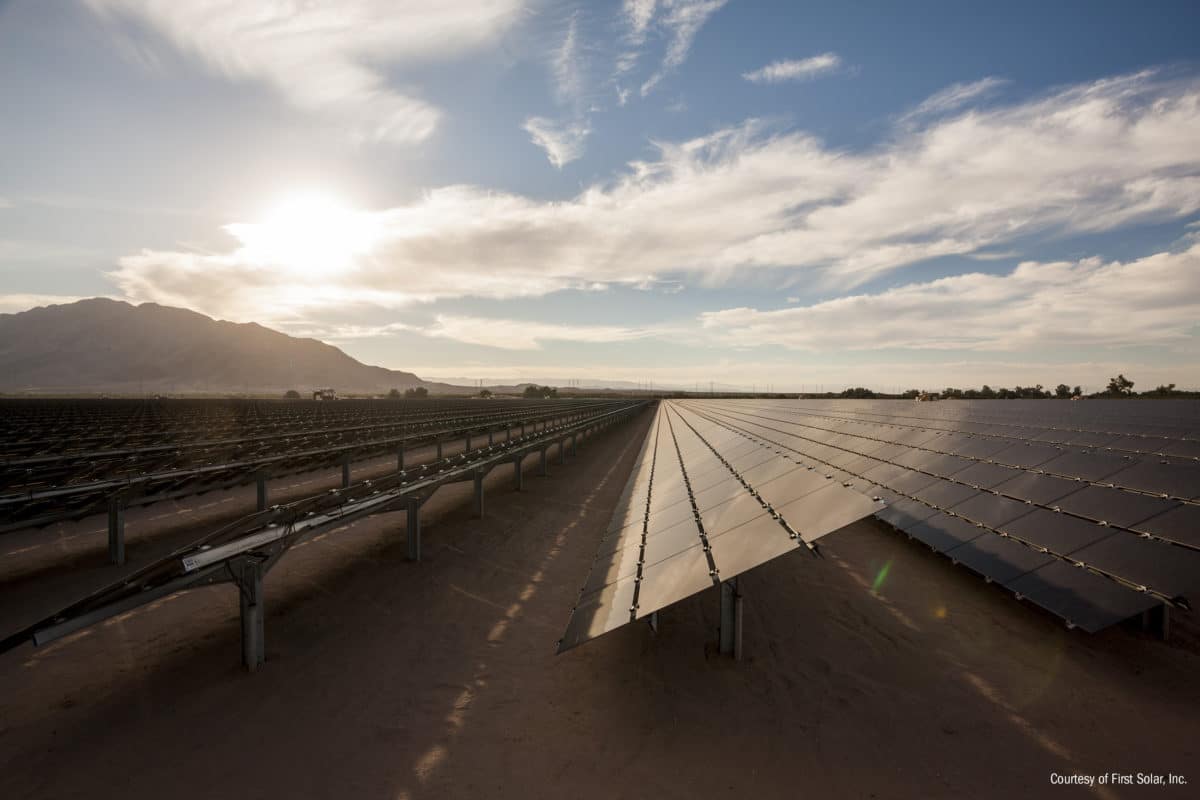The National Renewable Energy Laboratory (NREL) and the Department of Energy are soliciting leaders of companies and research institutes to join a consortium of cadmium telluride (CdTe) thin-film photovoltaic advancement, with submissions due in the coming days.
The CdTe Accelerator Program, announced this March, has a mission to form a consortium that guides the U.S. to a highly competitive position in the CdTe space.
Specifically, the program seeks to enable cell efficiencies above 24%, and sustainable module prices below $0.20/W by 2025. By 2030, the consortium will have a goal of over 26% efficiency, and costs below $0.15/W.
CdTe is known for its high light-absorption rates, and relatively low manufacturing costs, making it second only to silicon-based panels in deployment. NREL said that if CdTe research could unlock higher cell efficiencies and even lower module manufacturing costs, the United States could capture a larger portion of the global solar market.
The main activities of the consortium will include developing an annually updated CdTe roadmap, addressing the domestic supply chain, conducting core research projects to meet efficiency targets. They will also seek leaders to advise NREL on launching additional projects to reach the roadmap targets, with external research and development projects.
Areas of focus
NREL listed five relevant technical areas to the consortium’s work:
- Cell improvements – Overcome fundamental material issues such as recombination and low carrier concentration. Modify absorbers to increase CdTe hole density. Reduce interface recombination through passivation, reflectors, and/or shields. Improve transparent back contacts to enable tandem and bi-facial modules.
- Module improvements – Create processes that improve the ability and/or decrease the cost of recycling of modules. Increase performance, durability, safety, and develop residential and commercial modules.
- Characterization – Combine theory and experiments to describe material interactions. Create techniques for measuring band alignment and electron density in finished devices.
- Manufacturing – Develop synthesis or equipment innovations that increase throughput of manufacturing and reduce costs.
- Supply Chain – Define gaps in the domestic supply chain. Quantify materials, labor and capital expenditure in U.S. facilities to evaluate competitiveness. Analyze shipping costs and applicable duties, sales taxes, and/or tariffs across borders.
Award selection is anticipated for September 2021, and initial funding for the first 36 months of the program will be $9 million, said NREL.
NREL is celebrating nearly 30 years of partnership with First Solar, who recently announced plans of a $680 million, 3.3 GW annual capacity thin-film manufacturing plant in Ohio. The implied capital expenditure of manufacturing these modules will be $0.20/W, pacing well to achieve the consortium’s pricing goals.
This content is protected by copyright and may not be reused. If you want to cooperate with us and would like to reuse some of our content, please contact: editors@pv-magazine.com.









By submitting this form you agree to pv magazine using your data for the purposes of publishing your comment.
Your personal data will only be disclosed or otherwise transmitted to third parties for the purposes of spam filtering or if this is necessary for technical maintenance of the website. Any other transfer to third parties will not take place unless this is justified on the basis of applicable data protection regulations or if pv magazine is legally obliged to do so.
You may revoke this consent at any time with effect for the future, in which case your personal data will be deleted immediately. Otherwise, your data will be deleted if pv magazine has processed your request or the purpose of data storage is fulfilled.
Further information on data privacy can be found in our Data Protection Policy.